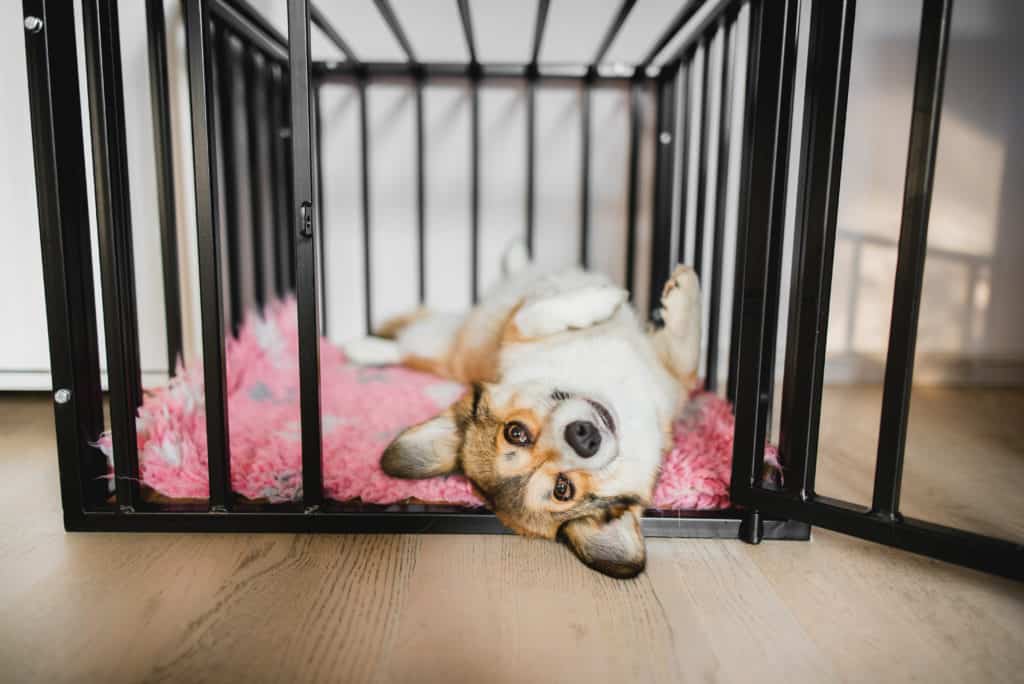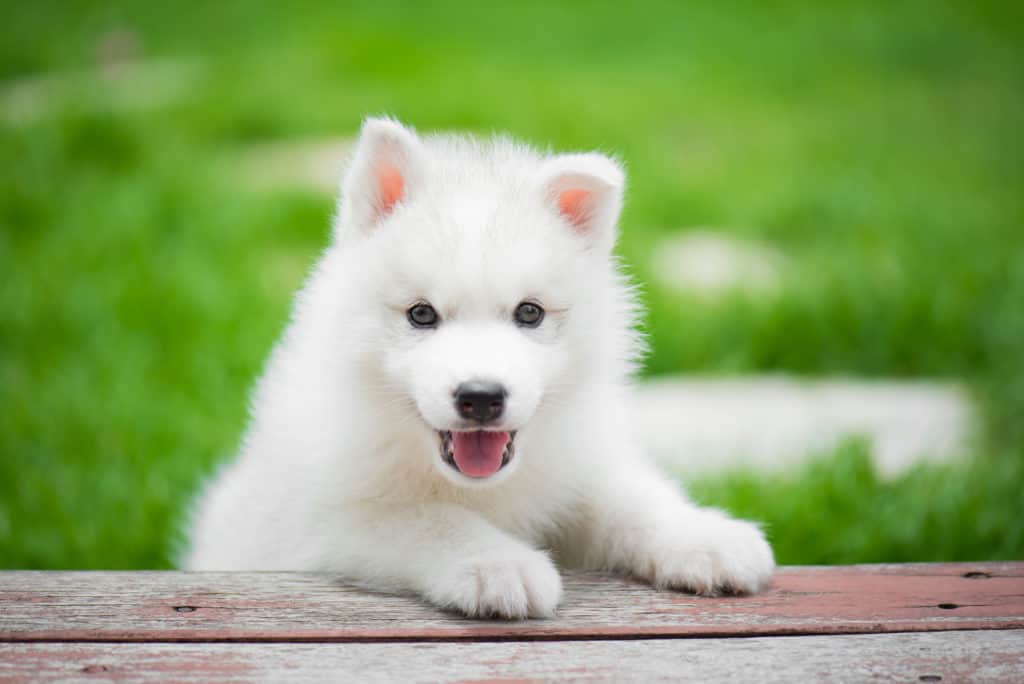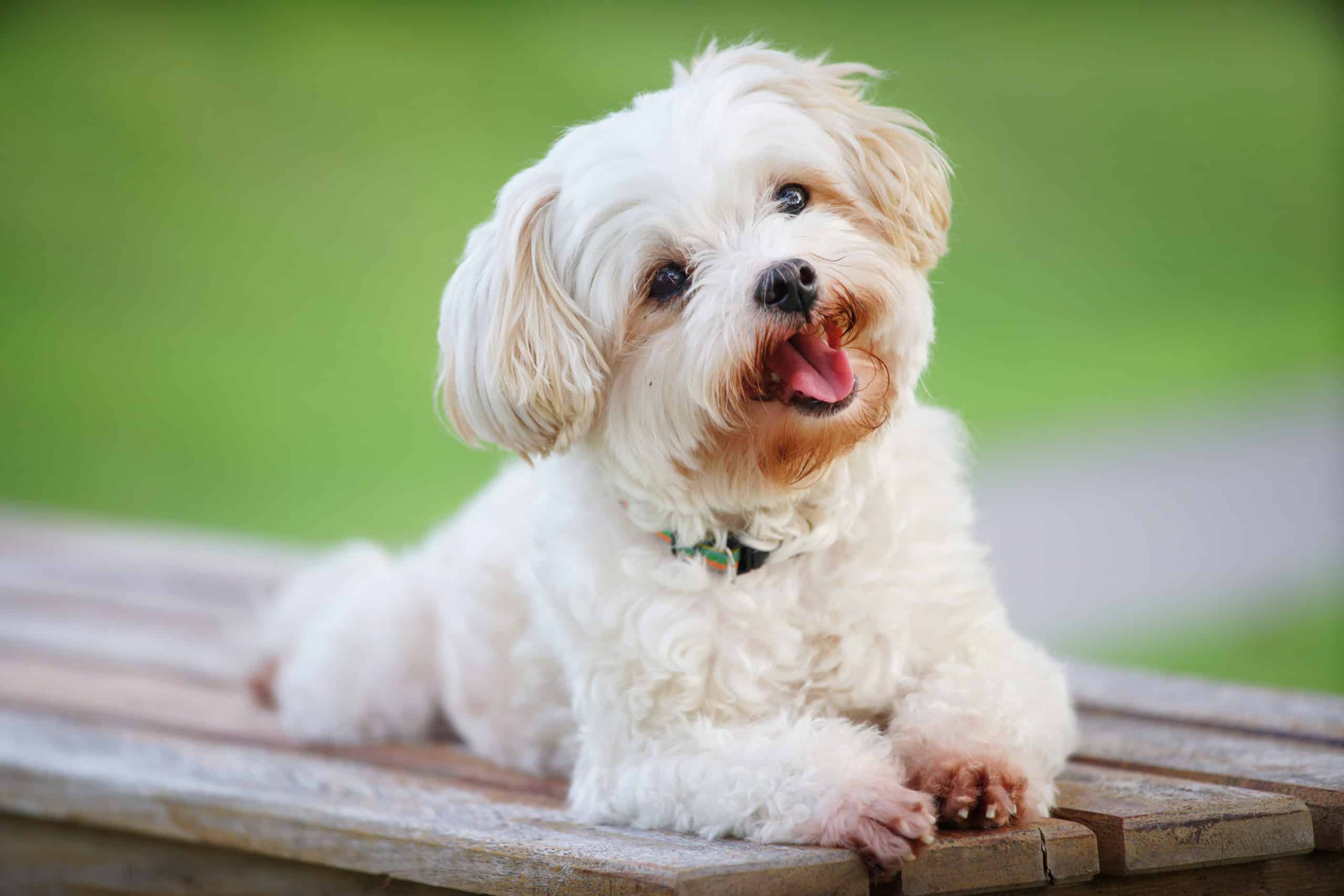One of the most frequent issues we hear about from dog owners – particularly new ones, or those who have just acquired a puppy – is their dog’s potty training (or lack of it).
Puppy training can be exhausting, and it goes without saying that nobody enjoys cleaning up after their puppy inside their home. This common complaint is frustrating for dog owners, but the good news is that there are methods you can use to teach your puppy where to use the bathroom. Use the tips in this article to set yourself – and your dog – up for success.
Your mindset is important
There are a lot of components that are required to successfully potty train your puppy. But before we get into the actual process, let’s take a step back and consider an often overlooked aspect of dog training – your own mindset.
Housebreaking a pup isn’t a two minute affair. It is going to take repetition to achieve the end goal. As with many aspects of dog training, you will need to be patient, accepting that there will inevitably be times when things do not go as planned.
Your own reactions to your dog’s behavior are actually crucial to the success of potty training. You’ll want to make sure you offer praise when your dog follows your instructions – and remain patient if things go awry.
Different options for potty training
There are a few different options for potty training your puppy. These include:
- Crate training
- Pad training
- Indoor potty training
There are pros and cons to each method, but crate training is typically the most effective way to potty train. One common misconception is that dogs see the crate as punishment, but dogs are naturally den creatures, and crave a clean area to rest and recuperate. In addition, dogs do not like to relax in their own mess. With this in mind, you can utilize the crate to your advantage in the potty training process.
It is important to choose a suitable crate for your puppy. The crate should be large enough that your dog is comfortable, but not so large that they could relieve themselves at one end of the crate and then retreat to the other. Remember that your puppy will be growing for the first couple of years of its life, and you may need to look for larger crates as they develop.
How long does puppy potty training take?
Every circumstance is different. Depending on the age, breed and characteristics of your puppy – combined with your proficiency and consistency as an owner – the potty training process can take from a matter of weeks to a number of months. Puppies who arrive in your home with accumulated bad habits may take longer to learn new behaviors. Remember to remain patient, and that the investment of time will be worth it in the end!

Potty training - step-by-step
Step 1: Understand your puppy
When a new puppy joins your family, it brings all of its learned behaviors along with it. In its previous home, its owner may not have had the inclination to potty train – and consequently, your new pup may believe it is appropriate to eliminate anywhere in your home.
For this reason (not just for potty training, but for spotting other potential behavioral issues), it is important to ask questions about the puppy’s history. Whether you are purchasing from a breeder or adopting from a shelter, you should ask to what extent any potty training has taken place. This will give you an understanding of how difficult (or easy!) it may be to complete the potty training process.
Other factors to consider are the overall health and welfare of the pup, and the age and size of the breed when they arrive in your home. Puppies can typically hold their bladders for one hour for every month they have been alive (for example, a three-month-old pup can hold it for three hours).
Step 2: Create a housetraining schedule
Like many things in life (and dog training), creating a plan leads to a better chance of success. Taking the time to write down a schedule of when your dog will need to go outside for potty breaks will be of great benefit. You can also set regular timers or alarms on your mobile phone as a reminder.
As a reference, a young puppy is likely to need to go outside every couple of hours – even during the middle of the night. Initially, this can result in up to a dozen potty breaks in a 24-hour period, but remember, you are trying to build a pattern of behavior to help your dog understand your expectations.
Within your schedule, you will also want to make sure to take your puppy outside at the following times:
- First thing in the morning
- After every meal
- After drinking water
- After playing/running indoors
- After chewing on a toy/bone
- After waking up from a nap
- Last thing at night
Step 3: Crate training
There are several ways to create positive associations between your pup and their crate. Try feeding the dog treats whilst they are inside their crate, and make sure the crate has a soft blanket for them to sleep on.
While the crate is a safe space for your puppy, it shouldn’t be overused. The crate is best utilized when you are unable to actively supervise your puppy, or when you want your pup to relax after a period of playtime or training.
After bringing your puppy inside after a potty break, a good rule of thumb is that it is likely safe to let them run around and explore for up to 30-40 minutes prior to putting them back in their crate.
Step 4: Actively supervise your pup
Supervision is key to making sure your puppy’s potty training is successful. Recognizing the signs that your puppy needs to go outside is pivotal to preventing accidents in your home and creating desirable, long lasting bathroom habits.
If your dog does have accidents in the home, clean the mess using an enzymatic cleaner. Cleaning thoroughly is important; due to their powerful olfactory systems, dogs may be tempted to continue eliminating in the home if they pick up on lingering odor.

Step 5: Stay positive!
As we said at the outset, having the right mindset as an owner is imperative.
Maintaining a positive attitude throughout the potty training process will help you and your dog. Resist the temptation – no matter how frustrating it might be – to punish or shout at your dog when an accident occurs.
Troubleshooting tips and advice
There are some scenarios where, even if following every step of the process meticulously, your dog may encounter issues with their potty training. Here are some common problems, and potential remedies:
- Smaller dogs typically have a more difficult time with potty training, due to a smaller bladder and digestive tract. They will likely require more active supervision and frequent potty breaks compared with larger breeds.
- Be careful of the consequences of changing your dog’s diet (this is true for dogs of all ages – not just puppies). These changes can result in unwanted accidents in the home if their new food does not agree with them. If you do change your dog’s food, monitor their stool to ensure they are absorbing the food thoroughly.
- Puppies who are being trained to go to the bathroom on grass may relieve themselves on soft surfaces within the home, such as rugs or carpet. This can occur if they cannot differentiate between the different surfaces, particularly if they are younger. Try not to let your puppy on soft surfaces until they are old enough to understand context.
- Unless the weather is hot or your pup is thirsty, taking their water bowl away at a set time each evening can reduce the potential for overnight accidents.
Ultimately, potty training is a process that is slightly different for each puppy. Some pups pick up the concept almost immediately; others can take weeks or months.
At Greenside Canine, we understand how frustrating it can be for dog owners who are struggling with potty training their puppy. Our team is able to help answer any questions you may have, and our dog training services can help you through this process with our expert guidance.
If you have any questions, please call us on (317) 558-9145 or email us at train@greensidecanine.com.

